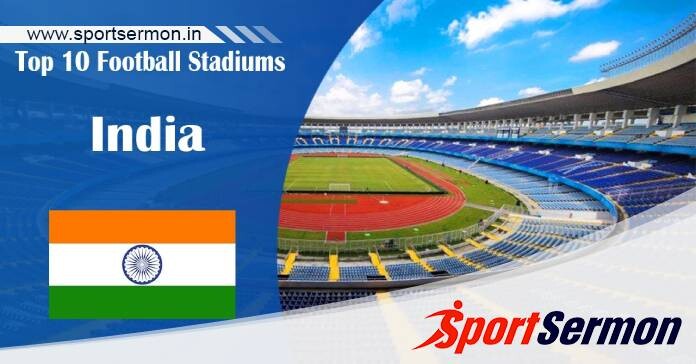Best Football Stadiums in India: The days when India’s only sport was cricket are long gone. The number of football stadiums in India has increased along with the popularity of the game and the ISL. Aspirations on the Indian football scene are being revived. Another important football tournament that India has hosted is the famous 2023 Intercontinental Cup, which took place in June 2023.
What else will demonstrate India’s success in India if that? Additionally, the Indian government has done a fantastic job of providing the best football venues for FIFA tournaments, international games, the Indian Super League, and several domestic games. The full list of India’s top ten football stadiums is provided below:
List of Best Football Stadiums in India
The Football Stadium in India: Salt Lake Stadium, Kolkata

Without a doubt, Kolkata’s Vivekananda Yuba Bharati Krirangan (VYBK), often known as Salt Lake Stadium, is the most famous football stadium in all of India. Up until 1989, Salt Lake, a stadium for football built in 1984, was the biggest in the world. When Mohun Bagan and East Bengal faced off in the 1997 Federation Cup semifinal, the stadium saw a record-breaking 131,781 spectators. It is India’s largest football stadium at the moment.
Despite having an 85,000 capacity following renovations in 2011, Salt Lake Stadium has seen some of the greatest events in Indian football history. Salt Lake Stadium hosted the 2017 U17 World FIFA tournament final, which was the first-ever FIFA competition held in India. The stadium has also hosted some of the greatest soccer players of all time, including Oliver Kahn and Lionel Messi. This stadium has hosted numerous significant games for the Blues Tigers as well.
Currently, the stadium serves as the home of ATK of the Indian Super League as well as Mohun Bagan and East Bengal of the I-League, two of Indian football’s fiercest rivals. The largest football stadium in India is this stunning stadium due to its enormous capacity and iconic beauty.
Jawaharlal Nehru Stadium, New Delhi

One of India’s most exquisite stadiums in terms of architecture is the capital city’s Jawaharlal Nehru Stadium. It was originally built in 1983 as a multipurpose sports stadium and underwent renovations in 2010 to bring it up to FIFA, AFC, and IAAF international standards. Following the renovations, the stadium can accommodate 60,000 spectators.
Jawaharlal Nehru Stadium has a similar history to Indian football in Salt Lake. In 2012, an exhibition match between India and Bayern Munich was played at the venue. Even though India lost 0-3, many people would recall the match as Baichung Bhutia’s farewell match.
Mumbai Football Arena
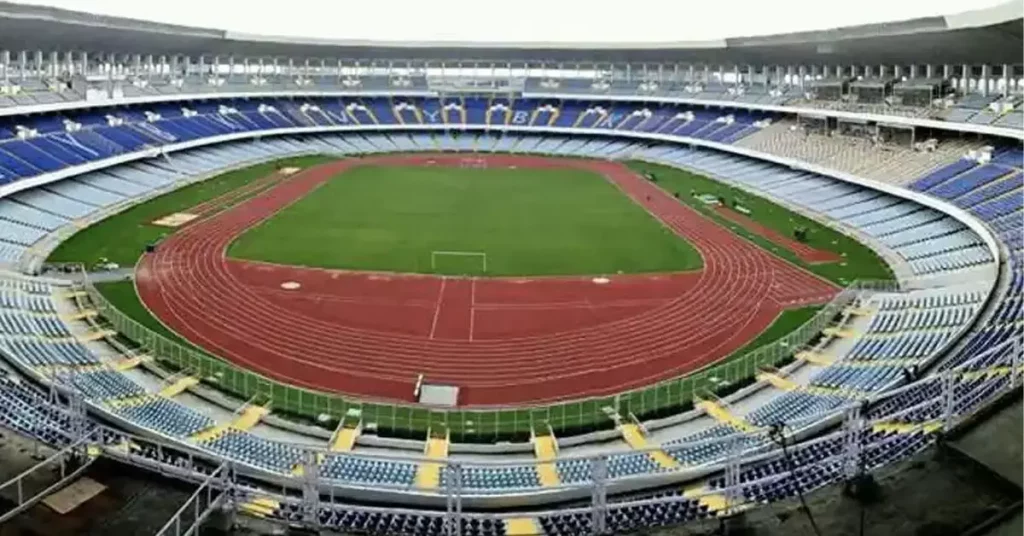
The Mumbai Football Arena, which was constructed in 1988 and restored in 2016, has grown to rank among India’s most popular football venues. On September 3, 2016, following renovations, the stadium played host to an international FIFA match between Puerto Rico and India. In what was the first international friendly to be played in Mumbai in sixty-one years, India prevailed 4-1.
In 2018, the stadium gained attention once more as a result of Sunil Chettri’s successful social media campaign to support the Blue Tigers. At the captain’s request, a large crowd attended the Intercontinental Cup final, which saw India defeat Kenya 2-0.
The stadium can hold only 6,600 people, but when the Indian team plays here, the atmosphere is legendary. In the ISL, Mumbai City FC has called the Mumbai Football Arena home since 2016. Bengaluru FC defeated FC Goa in the 2018–19 ISL final, which was also held at the stadium.
Jawaharlal Nehru Stadium, Kochi
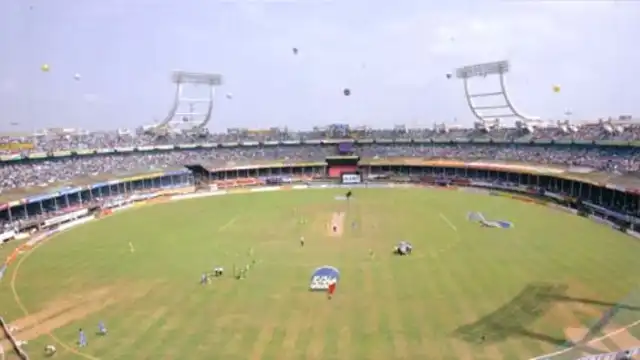
Jawaharlal Nehru Stadium, sometimes referred to as the noisiest football stadium in India, is evidence of the sport’s expansion in that country. The stadium was used for football and cricket when it was built in 1996. It has, however, transformed into a football-only stadium in recent years due to the growing fan base for the Kerala Blasters in the Indian Super League.
Renovated in 2008, the stadium’s architecture gives a fantastic atmosphere for the events. It can hold 80,000 people, but for ISL matches, only 40,000 can fit in. The stadium also boasts 2kW floodlights, which supply lighting levels for HD transmission.
Shree Shiv Chhatrapati Sports Complex, Pune

The multipurpose sports facility in Pune includes a state-of-the-art football stadium. Constructed in 1994, the sports complex underwent renovations in 2007 in preparation for the Commonwealth Youth Games that year.
With 11,900 seats, the stadium transforms into the Orange Army for FC Pune City’s ISL home games. The stadium has a strong history in football even outside of the ISL, having hosted the Air India football team, Mumbai FC (I-League), and Bharat FC (I-League, now defunct) in the past. In the I-League, it serves as the home field for DSK Shivajians F.C.
The Indian football team has also played a few games here. The Blue Tigers defeated Vietnam 3-1 in their debut game at the stadium.
Sree Kanteerava Stadium, Bengaluru
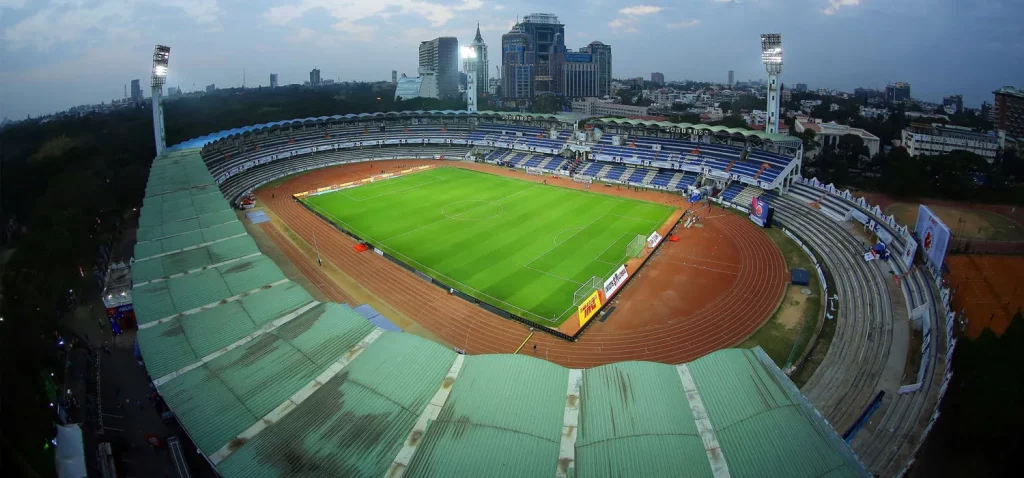
The home stadium of Bengaluru FC, the ISL champions, is Sree Kanteerava Stadium. With the backing of Bengaluru FC’s ardent West Block Blues supporters, it would be challenging to distinguish the stadium from the majority of football venues in Europe.
The multipurpose stadium, which was constructed in 1997, also features a volleyball court, a running track, and rock climbing walls. During ISL matches, the stadium, which can hold 25,000 people, turns blue. Indian football matches have also been held at Sree Kanteerava Stadium.
Jawaharlal Nehru Stadium, Chennai

Chennaiyin FC, the reigning ISL winners, call Jawaharlal Nehru Stadium, another venue named after India’s first prime minister, home. The multipurpose stadium not only holds football but also volleyball, basketball, table tennis, and kabaddi.
Although the stadium can hold 27,877 people, only 19,484 of those seats are used for ISL matches. Here was the scene of the highest-scoring ISL encounter, with Chennai defeating Mumbai City FC 5-1.
Fatorda Football Stadium, Goa

Originally constructed as the Jawaharlal Nehru Stadium, Fatorda Stadium has been home to numerous football clubs since 1989. Every time there is a football game at the stadium, the people of Goa bring their carnival culture.
2014 saw renovations to the stadium when FC Goa moved into it. It can accommodate 25,000 people, but for ISL games, that number drops to 18,600. As many as four Goan teams, Dempo S.C., Churchill Brothers S.C., Salgaocar S.C., and Sporting Clube de Goa, called Fatorda Stadium home during the 2007–08 I-League.
JRD Tata Sports Complex, Jamshedpur
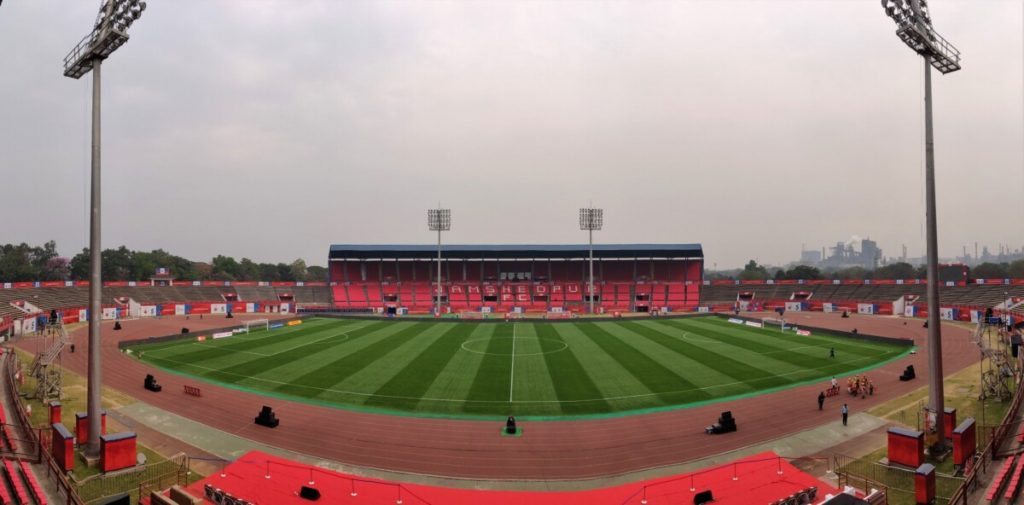
2017 renovations turned JRD Tata Sports Complex into one of India’s best football stadiums. The stadium required ₹400 million in renovations. Modern sports facilities made it worthwhile nonetheless.
The ISL team Jamshedpur FC plays its home games at the 25,000-capacity stadium. Also, the Tata Football Academy is housed there.
Indira Gandhi Athletic Stadium, Guwahati
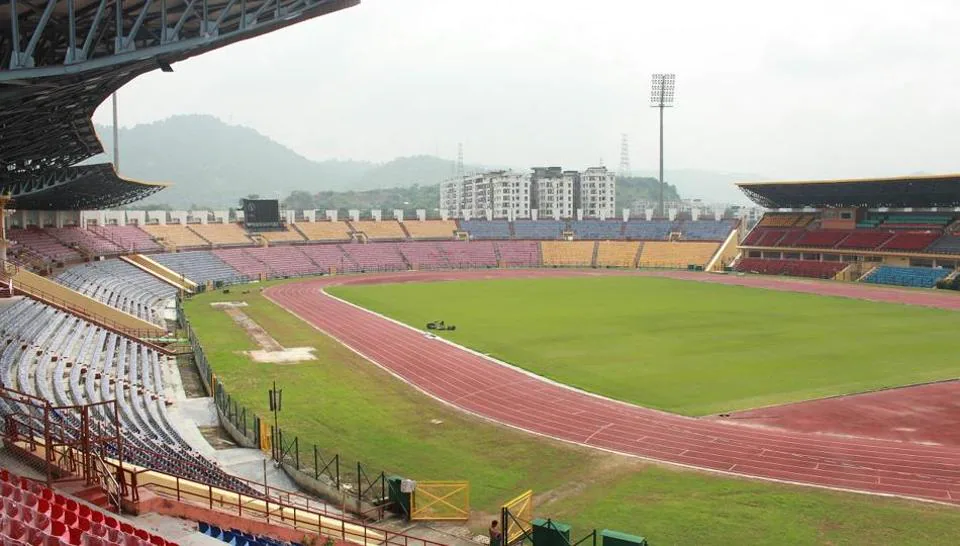
NorthEast United FC is the ISL representative for North-East India, the birthplace of Indian football. Additionally, the squad plays its home games in Guwahati at the Indira Gandhi Athletic Stadium. The 35,000-seat stadium was completed and ready in 2007. But before the U-17 World Cup began, the capacity was reduced to 23,850.
A record audience of 32,844 attended the NorthEast United vs. Chennaiyin FC game in 2016. The Blues Tigers have also played multiple times at the venue.
Also read, Top 10 Best Sports Anthems to hype the Stadium audience

